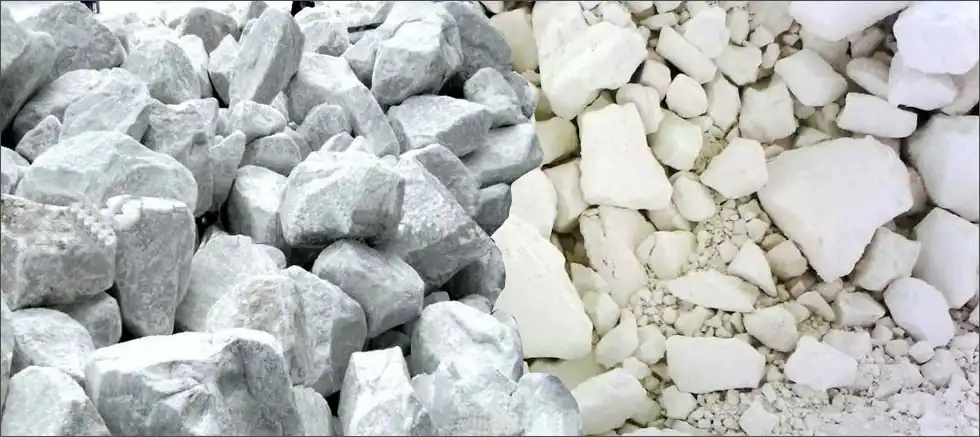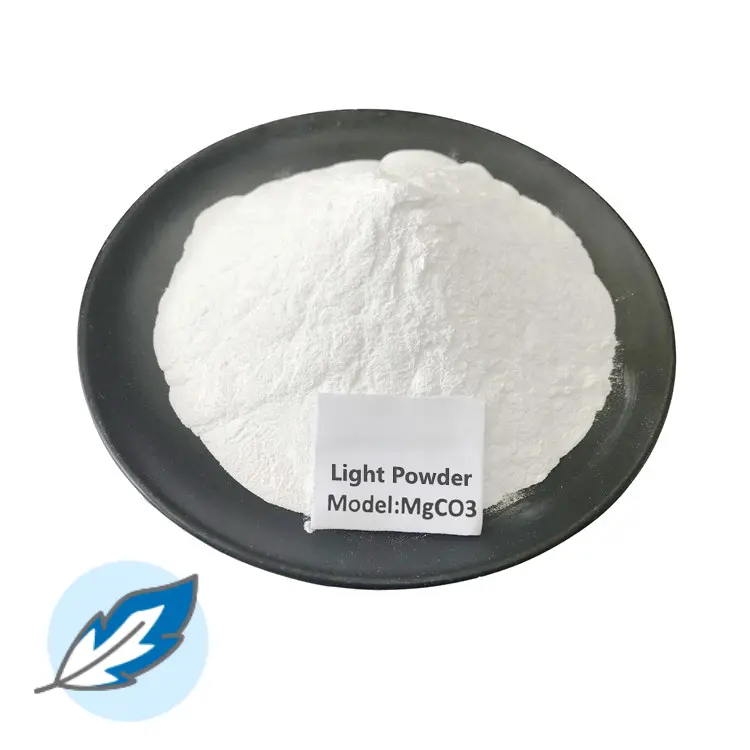Light magnesium carbonate is white amorphous powder, easily soluble in acid, slightly soluble in water, density 2.16g/cm3, thermal stability is poor, 300 ° C began to decompose, 800 ~ 900 ° C that is rapidly decomposed into magnesium oxide. Light magnesium carbonate is a high-grade inorganic filler, reinforcing agent and good flame retardant for rubber and plastic industry, filler for high-grade ink, pigment, toothpaste and cosmetics, raw material for high-grade ceramics, glass and fireproof coating.
With the growing demand for lightweight magnesium carbonate, the preparation method of high quality lightweight magnesium carbonate has very important theoretical significance and application value. In industry, we can use industrial by-products of magnesium hydroxide suspension and carbon dioxide reaction to prepare light magnesium carbonate, and in the magnesium hydroxide suspension contains sodium sulfate and other substances will not react with carbon dioxide gas.

Lightly burnt dolomite powder was used as raw material, and the digested dolomite powder digested liquid with high activity was prepared, and then the atmospheric pressure secondary carbonization method was used to prepare light magnesium carbonate, through the study of the various influencing factors in the preparation process, we determined the process parameters, and made a preliminary discussion of the mechanism of its action. The results showed that the process conditions of digestion were as follows: the light-fired dolomite material was powdered into small particles with an average particle size of 1.78 μm, and digested under the condition of 70 ℃ water temperature for 30 minutes, and then the solution after cooling and precipitation for 24 hours at room temperature was the digested solution; and
The process conditions of carbonization were as follows: the atmospheric pressure secondary carbonization method was used, the PH stopping power of the second and secondary carbonization was pH=10 and pH=9, respectively, the CO partial pressure of the first and second carbonization was Pco=0.03MPa and Pco=0.1MPa, respectively, and the concentration of the carbonization solution was 25g.L, and the stirring speed was 400 rpm; under the condition of the pyrolysis temperature of 50℃, the length of the preparation was 6060 μm or so, cross-section diameter of 2 μm or so, whiteness of 97.3, magnesium oxide content of 41.0%, calcium oxide content of 0.4% of light magnesium carbonate. The recovery rate of the light magnesium carbonate product was 54.3%. When the pyrolysis temperature is 60℃, the flaky or rose petal-shaped light magnesium carbonate can be prepared; when the pyrolysis temperature reaches 70℃, the spherical light magnesium carbonate with a diameter of about 40μm can be prepared.
Changes in pyrolysis temperature will affect the pyrolysis rate of magnesium bicarbonate solution and the solution structure, after two-dimensional nucleation or intermolecular bonding force enhancement and thus the formation of flaky or spherical magnesium light carbonate; when the heavy magnesium water pyrolysis at 50 ° C, no additives of the rod-shaped magnesium light carbonate will be agglomeration phenomenon, the addition of sodium citrate can be made to make the particles of the rod-shaped magnesium light carbonate uniformly distributed, the addition of ethanol can be Reduce the length-to-diameter ratio of magnesium carbonate, add magnesium chloride can improve the crystal length of rod-shaped magnesium carbonate. The main reason is that adding additives can change the crystallization behavior of MgCl2 and the supersaturation degree of the solution.

